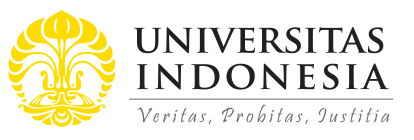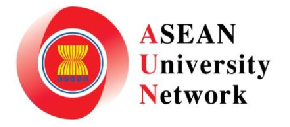
Abstract
Podcasts have become more popular in Indonesia recently. Studies have shown that video podcasts, which incorporate education and entertainment aspects, are effective as a medium to study language and medical subjects among students and clinicians. This study aims to analyze video podcasts’ utilization in nutrition education and how they can engage viewers from the general community. This paper further aims to describe the development of a video podcast, NutriPodcast, as an innovative media to educate the community regarding nutrition topics. The number of audience views was calculated by utilizing the analytical feature on social media. The methodology to develop the podcast consisted of three stages: design, edit, and distribution. The design stage of the podcast refers to planning the style and length of the podcast and determining the media to be used. The editing stage includes both technological and technical aspects, such as hardware and software equipment. YouTube was chosen as the platform to upload the video podcast. The number of views of the podcast on YouTube was comparable to that of another previous podcast research. Most viewers used smartphones to access video podcasts. People from the 25–34 age group (55.2%) and females (51.5%) made up more than half the proportion of the viewers. It can be concluded that a video podcast provides an opportunity to facilitate a community seeking nutrition and health information.
References
Balls-Berry, J., Sinicrope, P., Soto, M. V., Brockman, T., Bock, M., & Patten, C. (2018). Linking podcasts with social media to promote community health and medical research: Feasibility study. JMIR Formative Research, 2(2). https://doi.org/10.2196/10025
Beautemps, J., & Bresges, A. (2021). What comprises a Successful Educational Science YouTube Video? A five-thousand user survey on viewing behaviors and self-Pperceived importance of various variables controlled by content creators. Frontiers in Communication, 5(April), 1-14.
https://doi.org/10.3389/fcomm.2020.600595
Buzzprout. (2021). Podcast statistics: growth and demographic data. https://www.buzzsprout.com/blog/podcast-statistics
Carvalho, A. A., Aguiar, C., Carvalho, C. J., & Cabecinhas, R. (2009). Influence of podcast characteristics on higher students’ acceptance. In E-Learn: World Conference on E-Learning in Corporate, Government, Healthcare, and Higher Education. Association for the Advancement of Computing in Education (AACE), 3625-3633.
Chan, A., Lee, M. J., & McLoughlin, C. (2006, December). Everyone’s learning with podcasting: A Charles Sturt University experience. In Proceedings of the 23rd Annual Conference of the Australasian Society for Computers in Learning in Tertiary Education: Who’s Learning (p. 111Á120). https://www.ascilite.org/conferences/sydney06/proceeding/html_abstracts/171.html
Coffield, F., Moseley, D., Hall, E., & Ecclestone, K. (2004). LSRC reference. Learning, 84. http://www.voced.edu.au/td/tnc_79.72
Cosimini, M. J., Cho, D., Liley, F., & Espinoza, J. (2017). Podcasting in medical education: How long should an educational podcast be? Journal of Graduate Medical Education, 9(3), 388–389. https://doi.org/10.4300/JGME-D-17-00015.1
Darwis, R. (2016). Students ’ Perceptions towards the Use of Podcast in Learning English : a Case Study of the Second Grade Students At One High School in Bandung. Journal of English and Education, 4(2), 80-100. https://pdfs.semanticscholar.org/abec/e9008ba30d3cb8924a267bc49362595af069.pdf
Decorby-Watson, K., Mensah, G., Bergeron, K., Abdi, S., Rempel, B., & Manson, H. (2018). Effectiveness of capacity building interventions relevant to public health practice: A systematic review. BMC Public Health, 18(1), 684. https://doi.org/10.1186/s12889-018-5591-6
Edirisingha, P., Rizzi, C., Nie, M., & Rothwell, L. (2007). Podcasting to provide teaching and learning support for an undergraduate module on English language and communication. Turkish Online Journal of Distance Education, 8(3), 87-107. https://doi.org/10.17718/tojde.30870
Fernandez, V., Sallan, J. M., & Simo, P. (2015). Past, Present, and Future of Podcasting in Higher Education. September, 305-330. https://doi.org/10.1007/978-3-642-55352-3_14
Fox, S., & Rainie, L. (2002). Vital decisions: how Internet users decide what information to trust when they or their loved ones are sick. A Pew Internet Health Report.
Hill, J. L., & Nelson, A. (2011). New technology, new pedagogy? Employing video podcasts in learning and teaching about exotic ecosystems. Environmental Education Research, 17(3), 393-408. https://doi.org/10.1080/13504622.2010.545873
IDN. (2020). Indonesia Millennial Report. IDN Research Institute, 01, 61. https://www.idntimes.com/indonesiamillennialreport2019
Indahsari, D. (2020). Using podcast for EFL students in language learning. JEES (Journal of English Educators Society), 5(2), 103-108. https://doi.org/10.21070/jees.v5i2.767
Kalludi, S., Punja, D., Rao, R., & Dhar, M. (2015). Is video podcast supplementation as a learning aid beneficial to dental students? Journal of Clinical and Diagnostic Research, 9(12), CC04-CC07. https://doi.org/10.7860/JCDR/2014/14428.6944
Kay, R. H. (2012). Exploring the use of video podcasts in education: A comprehensive review of the literature. Computers in Human Behavior, 28(3), 820-831. https://doi.org/10.1016/j.chb.2012.01.011
Kivits, J. (2009). Everyday health and the internet: A mediated health perspective on health information seeking. Sociology of Health and Illness, 31(5), 673-687. https://doi.org/10.1111/j.1467-9566.2008.01153.x
Li, H. C. (2010). Using podcasts for learning English: perceptions of Hong Kong Secondary 6 ESL students. Début: The Undergraduate Journal of Languages, Linguistics and Area Studies, 1(2), 78-90.
Li, J., Theng, Y. L., & Foo, S. (2016). Predictors of online health information seeking behavior: Changes between 2002 and 2012. Health Informatics Journal, 22(4), 804-814. https://doi.org/10.1177/1460458215595851
Lomayesva, N. L., Martin, A. S., Dowley, P. A., Davies, N. W., Olyha, S. J., & Wijesekera, T. P. (2020). Focus: Medical Education: Five Medical Education Podcasts You Need to Know. Yale Journal of Biology and Medicine, 93(3), 461-466. https://www.ncbi.nlm.nih.gov/pmc/articles/PMC7448387/
Madathil, K. C., Rivera-Rodriguez, A. J., Greenstein, J. S., & Gramopadhye, A. K. (2015). Healthcare information on YouTube: A systematic review. Health Informatics Journal, 21(3), 173-194. https://doi.org/10.1177/1460458213512220
Mahendradhata, Y., Trisnantoro, L., Listyadewi, S., Soewondo, P., MArthias, T., Harimurti, P., & Prawira, J. (2017). The Republic of Indonesia Health System Review. https://apps.who.int/iris/handle/10665/254716
Malecki, S. L., Quinn, K. L., Zilbert, N., Razak, F., Ginsburg, S., Verma, A. A., & Melvin, L. (2019). Understanding the use and perceived impact of a medical podcast: Qualitative study. JMIR Medical Education, 5(2). https://doi.org/10.2196/12901
McClung, S., & Johnson, K. (2010). Examining the motives of podcast users. Journal of Radio and Audio Media, 17(1), 82-95. https://doi.org/10.1080/19376521003719391
Nwosu, A. C., Monnery, D., Reid, V. L., & Chapman, L. (2017). Use of podcast technology to facilitate education, communication and dissemination in palliative care: The development of the AmiPal podcast. BMJ Supportive and Palliative Care, 7(2), 212-217. https://doi.org/10.1136/bmjspcare-2016-001140
Ramadhani, S., Suroso, A. I., & Ratono, J. (2020). Consumer attitude, behavioral intention, and watching behavior of online video advertising on Youtube. Jurnal Aplikasi Manajemen, 18(3), 493-503. https://doi.org/10.21776/ub.jam.2020.018.03.09
Rowley, J., Johnson, F., & Sbaffi, L. (2017). Gender as an influencer of online health information-seeking and evaluation behavior. Journal of the Association for Information Science and Technology, 68(1), 36-47. https://doi.org/10.1002/asi.23597
Roy Morgan Research. (2019). 56 million Indonesians engage in online entertainment. In Roy Morgan Research (Vol. 61, Issue 8060). http://roymorgan.com.au/findings/8060-podcast-listeners-indonesia-march-2019-201908020539
Saah, F. I., Amu, H., Seidu, A. A., & Bain, L. E. (2021). Health knowledge and care seeking behaviour in resource-limited settings amidst the COVID-19 pandemic: A qualitative study in Ghana. PLoS ONE, 16(5), 1-15. https://doi.org/10.1371/journal.pone.0250940
Savel, R. H., Goldstein, E. B., Perencevich, E. N., & Angood, P. B. (2007). The iCritical care podcast: A novel medium for critical care communication and education. Journal of the American Medical Informatics Association, 14(1), 94-99. https://doi.org/10.1197/jamia.M2205
Shahid, S. H., & Ali, Z. (2017). Finding the best length of video-podcasts : Effects of varied numbers of video-podcast used on listening comprehension of Saudi undergraduates. International Journal of Novel Research in Education and Learning 4(5), 19-31.
Stern, M. J., Cotten, S. R., & Drentea, P. (2012). The separate spheres of online health: Gender, parenting, and online health information searching in the information age. Journal of Family Issues, 33(10), 1324-1350. https://doi.org/10.1177/0192513X11425459
Velho, R. M., Mendes, A. M. F., & Azevedo, C. L. N. (2020). Communicating science with YouTube videos: How nine factors relate to and affect video views. Frontiers in Communication, 5(September), 1-14. https://doi.org/10.3389/fcomm.2020.567606
WHO. (2020). Coronavirus disease (COVID-19) advice for the public. https://www.who.int/emergencies/diseases/novel-coronavirus-2019/advice-for-public
Yeh, C.-C. (2014). An investigation of a podcast learning project for extensive listening. Language Education in Asia, 4(2), 135-149. https://doi.org/10.5746/leia/13/v4/i2/a04/yeh
Zellatifanny, C. M. (2020). Trends in disseminating audio on demand content through podcast: An opportunity and challenge in Indonesia. Journal Pekommas, 5(2), 117. https://doi.org/10.30818/jpkm.2020.2050202
Recommended Citation
Sholihah, Lini Anisfatus
(2022).
The Development of Video Podcast as an Innovation in Online Nutrition Education and Its Engagement Data Analysis.
ASEAN Journal of Community Engagement, 6(1), 169-187.
Available at: https://doi.org/10.7454/ajce.v6i1.1146
Included in
Educational Technology Commons, Online and Distance Education Commons, Other Nutrition Commons, Public Health Education and Promotion Commons







